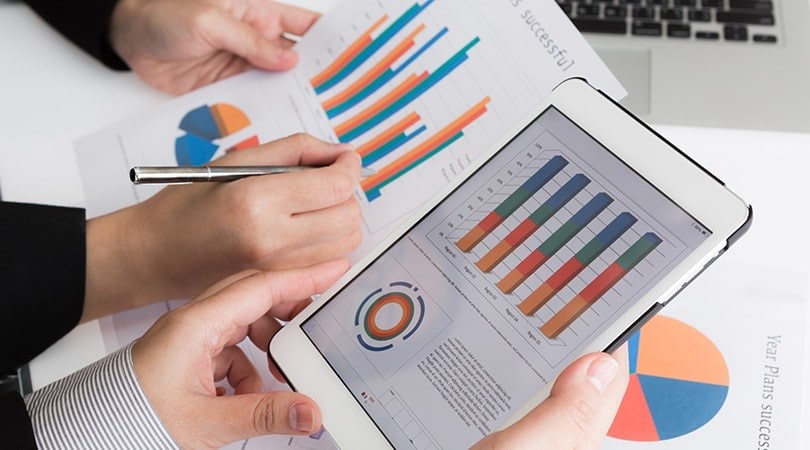In the digital age, one of the best ways to maximize cost-savings is to implement a strategic sourcing solution. However, before taking on this sweeping task it’s important to learn all of the key phrases and steps involved in the strategic sourcing process.
The key phases of the strategic sourcing process
Phase 1: Analysis, including comprehensive spend analysis, the total cost of goods-and-services analysis, and a supplier-marketplace analysis.
Phase 2: Planning, which involves applying the insights gleaned from the analysis phase to determine your overall sourcing strategy, including key changes to your supply structure.
Phase 3: Deal-making, which not only involves renewing, renegotiating or discontinuing current supplier contracts as necessary but also distributing digital RFI/RFP/RFQs and performing online reverse auctions to create new contracts with improved cost-savings.
Phase 4: Measuring and tracking your efforts with e-Sourcing analytics, will give your organization the opportunity to gauge the success of your revitalized sourcing strategy.
The first phase: analysis
During the first phase of the strategic sourcing process, the organization must gain full access to its current spending in order to perform a comprehensive spend analysis. It’s often wise to seek the help of an experienced team of sourcing and procurement specialists in order to successfully navigate all of the following tasks involved in a complete spend analysis: data gathering, data aggregation, data cleansing, duplicate-record removal, vendor name normalization, vendor categorization, data classification, and spend cube generation.
It’s also essential to make full use of best-in-class spend-management software. Before choosing a solution, always look for the following features:
- an easy-to-use, cloud-based spend analysis portal, including real-time reporting and analysis
- the capacity to build custom views and templates for at-a-glance insights into your spend data
- a single, intuitive UI for displaying all supplier and spend data
- and a complete, error-free dataset that is updated frequently
Once your spend analysis platform is in place, you will find that you have real-time insight into your spending patterns across various spend categories, as well as at the level of individual suppliers. You will see clear opportunities to consolidate supplier redundancies and increase supplier compliance. You will have immediate insight into supplier pricing and trends, allowing for quick comparisons. Overall, between your spend analysis team, your spend analytics portal and your wealth of fresh spend data, you will have the capacity to make informed sourcing decisions, manage your suppliers more effectively, and view precisely where your spending is going.
A broader cost and supplier-marketplace analysis
For a broader view, it’s important at this point to expand the scope of your analysis to identify the total cost your organization must bear to provide its goods and services. Turning the broader analysis outward, it’s also important to include a broad supplier-market survey that extends beyond one’s current supplier pool to include the strengths and weaknesses of all available suppliers in the marketplace.
The second phase: planning
Having thoroughly analyzed the organization’s spend, the total cost of goods-and-services, and the supplier pool/marketplace, it’s time to move to the second phase: planning, which amounts to applying the insights gleaned from the analysis phase to your overall sourcing strategy. During the critical planning phase, the organization will use its new cost-saving insight to determine which current contracts to renew or renegotiate. This is also the time to prepare to re-enter the greater supplier marketplace to seek new suppliers to replace any inflexible current suppliers that are clearly undermining one’s cost-saving efforts.
The third phase: deal-making
Having forged an overall sourcing strategy while making critical supplier decisions, it’s time for the third phase of the strategic sourcing process: deal-making. With a keen eye on the cost-to-benefit ratio of each supplier contract, this phase will result in a new supply structure that will guide future decision-making. The first step in the deal-making phase includes:
- extending current, cost-saving supplier contracts
- renegotiating current contracts that require more favorable terms
- allowing current contracts from costly, inflexible suppliers to expire.
In order to replace costly supplier contracts in the most efficient fashion, it’s time to hold an e-Sourcing event, which will either involve the distribution of digital RFP/RFI/RFQs or the launch of a reverse auction. Either approach should result in digital purchase orders leading to new, cost-saving contracts and terms.
Digital RFP/RFI/RFQs
Paperwork-based RFPs, RFIs and RFQs are slow, inefficient and costly. In 2017, going digital is the only alternative. However, finding the right software and the right procurement team to help your organization make the transition can prove difficult. Therefore, when deciding on an e-Sourcing alternative to replace your paper-based RFP/RFI/RFQs, make sure that the procurement team under consideration has the depth of e-Sourcing experience to handle the task, and that their e-Sourcing software includes advanced features such as response-scoring on an individual-evaluator basis.
Reverse Auctions
An online reverse auction is perhaps the most efficient way for suppliers to compete for your business. Turning the conventional, “forward auction” concept on its head, a reverse auction involves a buyer awarding a contract to purchase goods or services from the qualified vendor will the lowest bid. Under the right conditions, which includes the right professional guidance and the most robust software, the reverse auction process can maximize cost savings while maintaining the highest supplier quality.
Depending on your needs, you may want to hire a team of e-Sourcing specialists to run the reverse auction for you, or you may choose to run the auction yourself. In either case, the success of the reverse auction will also depend on the quality of the reserve auction software you license. Therefore, before choosing a provider, ensure that their reverse auction solution is state-of-the-art, with a cloud-based bidding feature complete with a real-time communication platform and highly sophisticated settings that cover all the contingencies that surround the high-stakes atmosphere of a real-time online auction.
The fourth phase: measuring and tracking
Having performed a thorough strategic sourcing analysis, applied the insights to your overall sourcing plan, and repaired or replaced any costly contracts in your supplier pool, it is now time for the final phase of the strategic sourcing process: measuring the success of your new sourcing strategy. The e-Sourcing software you choose can make all the difference during this final phase. Therefore, be sure to verify that the sourcing analytics and visualizations provided by the e-Sourcing platform under consideration are best-in-class.
Although tracking will be ongoing, it’s important to fully engage with this phase annually to make tactical adjustments to one’s sourcing strategy at the outset of each fiscal year.
A Complete Sourcing Strategy
To maximize cost savings in the digital age, it’s of critical importance for every enterprise to learn the key phases and steps involved in the strategic sourcing process as outlined above. Comprehensive spend analysis and analysis of the supplier marketplace will allow you to adjust your supply structure and plan a more effective sourcing strategy, maximizing cost savings. The deal-making phase provides opportunities to renew healthy, cost-saving supplier contracts; renegotiate flexible-supplier contracts and replace costly contrasts from inflexible suppliers. At this stage, the e-Sourcing aspect of your strategy comes into full prominence, with digital RFI/RFP/RFQs and online reverse auctions leading the way. Finally, measuring and tracking not only empowers you to gauge the success of your efforts with highly intuitive e-Sourcing software but gives you the tools to fine-tune your sourcing strategy and further improve your cost-savings, year after year.
ProcurePort’s automated e-Sourcing solutions assist you in each phase of the strategic sourcing process, uncovering opportunities for cost savings and optimizing supplier contracts. The ProcurePort e-Procurement Software suite provides the critical e-sourcing tools that enable a procurement process delivering better spend management and improved relationship between buyers and suppliers. Whether used independently or integrated with your ERP software such as SAP e-Sourcing, ProcurePort provides the e-Sourcing tools necessary to drive cost reduction in any organization’s supply chain.
Learn how ProcurePort’s e-Sourcing software can improve the accuracy and availability of information on both the supply and demand side, facilitating collaboration as well as control and compliance. Contact us today to request a demo of our e-Sourcing software.











